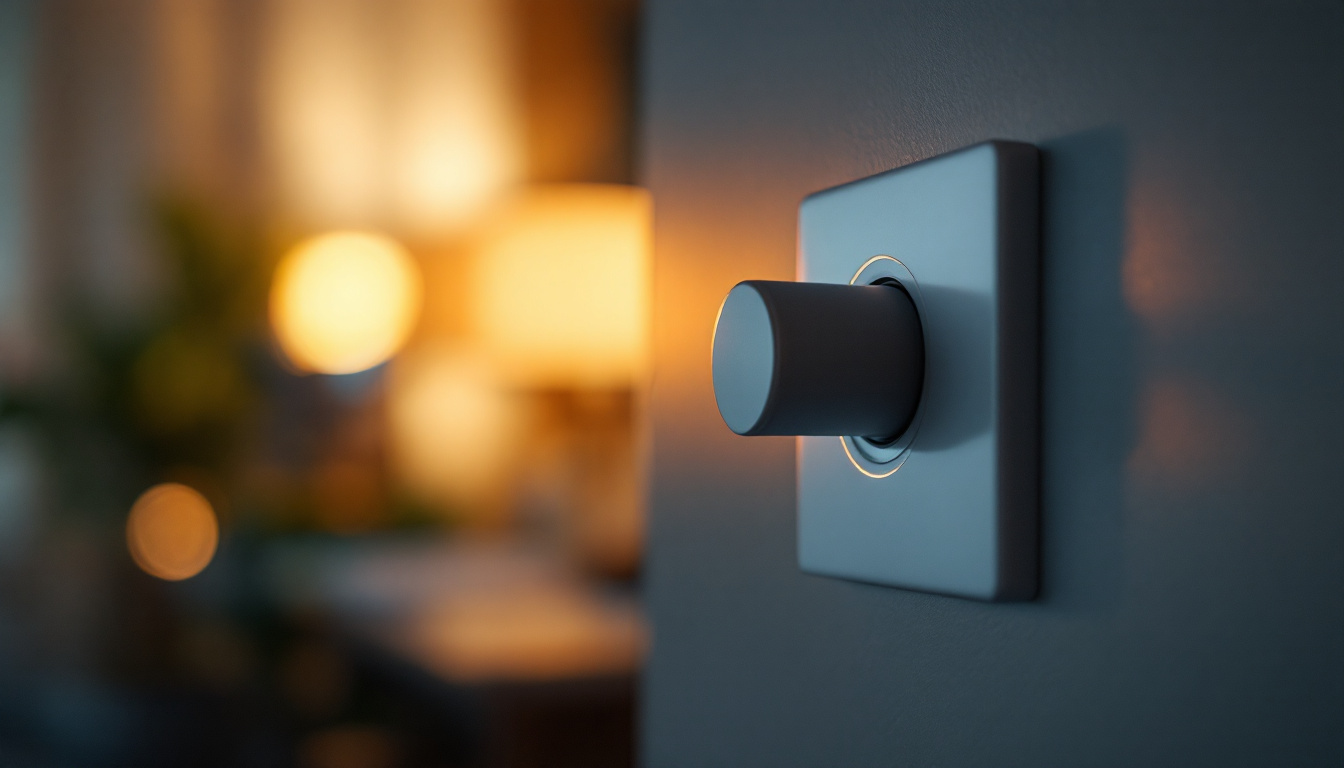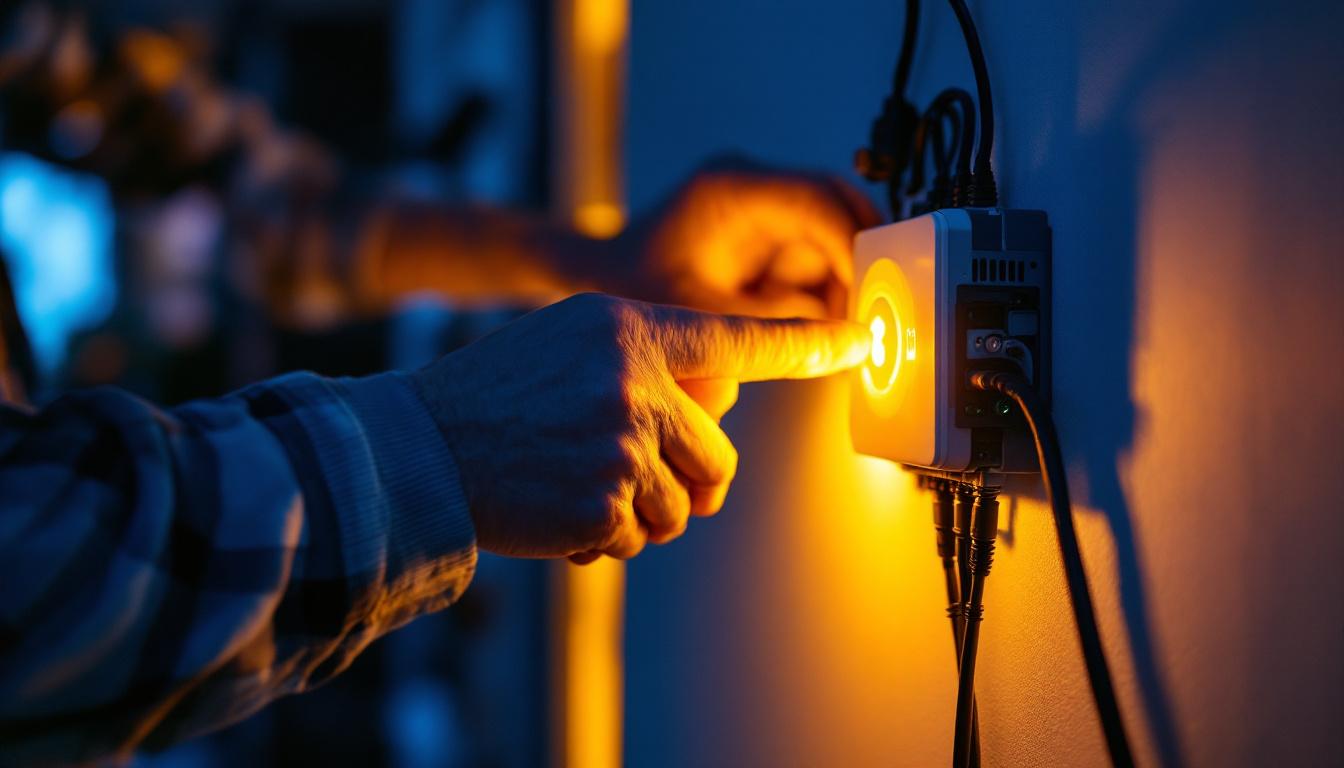
Dimmer switches have become a staple in modern lighting design, offering versatility and energy efficiency. For lighting contractors, understanding the mechanics and functionality of dimmer switches is essential not only for installation but also for addressing client inquiries. This article delves into the workings of dimmer switches, common questions contractors face, and best practices for installation and troubleshooting.
At their core, dimmer switches allow users to adjust the brightness of their lighting fixtures. This capability not only enhances the ambiance of a space but also contributes to energy savings. The technology behind dimmer switches has evolved significantly, moving from simple resistive dimmers to more sophisticated electronic models. With the rise of smart home technology, many dimmers now offer wireless control options, allowing users to adjust lighting from their smartphones or through voice commands, further integrating convenience into modern living.
There are several types of dimmer switches available, each with its own unique mechanism. The most common types include:
The operation of a dimmer switch can be understood through its internal components. Most modern dimmers utilize a semiconductor device known as a TRIAC (Triode for Alternating Current). This component regulates the flow of electricity to the light fixture by rapidly turning the current on and off, effectively reducing the average voltage and thus dimming the light.
When the dimmer is adjusted, it changes the point in the AC cycle at which the TRIAC turns on. This adjustment allows for precise control over the brightness level, providing a seamless transition from bright to dim lighting. Additionally, advancements in dimmer technology have led to the development of smart dimmers that can be programmed for specific lighting scenes, enhancing the functionality of a space. For instance, a smart dimmer can be set to gradually brighten in the morning to simulate a natural sunrise, promoting a more pleasant waking experience.
Moreover, the integration of dimmer switches with home automation systems has opened up new possibilities for energy efficiency and convenience. By utilizing sensors, these systems can automatically adjust lighting based on the time of day or occupancy, ensuring that lights are only on when needed. This not only saves energy but also prolongs the lifespan of the bulbs, making dimmer switches a smart choice for both environmental and economic reasons.
Lighting contractors frequently field questions from clients regarding dimmer switches. Addressing these inquiries not only enhances customer satisfaction but also builds trust in the contractor’s expertise. Here are some of the most common questions:
Not all bulbs are compatible with dimmer switches. Traditional incandescent and halogen bulbs work well with most dimmers. However, when it comes to LED and CFL bulbs, compatibility can be an issue. It is essential to use bulbs specifically labeled as “dimmable.” Using non-dimmable bulbs with a dimmer switch can lead to flickering, buzzing, or even damage to the bulb. Furthermore, advancements in LED technology have led to a wider range of dimmable options, allowing homeowners to choose energy-efficient lighting without sacrificing functionality. When selecting bulbs, it’s also important to consider the color temperature, as this can affect the ambiance of the space when dimmed.
Flickering can be attributed to several factors. One common cause is the use of incompatible bulbs, as mentioned earlier. Additionally, poor connections in the wiring or a faulty dimmer switch can also lead to flickering. It’s advisable to check the compatibility of the bulbs and ensure that the dimmer switch is functioning correctly. If flickering persists, it may be necessary to replace the dimmer with a higher-quality model. In some cases, the issue may stem from the electrical system itself, such as voltage fluctuations or circuit overloads. Consulting with a qualified electrician can help diagnose these underlying issues, ensuring a stable and flicker-free lighting experience.
The number of lights that can be controlled by a single dimmer switch depends on the wattage rating of the dimmer and the total wattage of the connected lights. Most standard dimmers can handle between 600 to 1000 watts. It’s crucial to calculate the total wattage of all connected fixtures to avoid overloading the dimmer, which can lead to overheating and potential failure. Additionally, lighting contractors often recommend grouping lights based on their usage and brightness needs. For instance, a dimmer controlling ambient lighting in a living room may differ from one used for task lighting in a kitchen. Understanding the purpose of each lighting zone can help in making informed decisions about how many fixtures to connect to a single dimmer, ultimately enhancing the functionality and aesthetics of the space.
Proper installation of dimmer switches is vital for their performance and longevity. Following best practices can help ensure a smooth installation process and minimize future issues.
Selecting the appropriate dimmer switch is the first step in a successful installation. Consider the type of lighting being used, the total wattage, and whether the dimmer will be used with multiple types of bulbs. For instance, if the installation involves a mix of LED and incandescent bulbs, a universal dimmer that accommodates both types may be the best choice. Additionally, it’s important to consider the style of the dimmer switch itself; there are various designs available, from traditional toggle switches to sleek, modern touch-sensitive panels. Choosing a design that complements your home’s decor can enhance both functionality and aesthetics.
When wiring a dimmer switch, it is essential to follow the manufacturer’s instructions carefully. Ensure that the power is turned off at the circuit breaker before beginning the installation. Properly connect the wires according to the dimmer’s specifications, and make sure to secure all connections to prevent any loose wiring that could lead to malfunction. Additionally, consider the gauge of the wire being used; using the correct wire gauge is crucial for safety and efficiency. If you are unsure about the wiring process, consulting a professional electrician can provide peace of mind and ensure that the installation meets local electrical codes.
After installation, it is crucial to test the dimmer switch to ensure everything is functioning correctly. Gradually adjust the dimmer to its full range to check for smooth operation. Look for any signs of flickering or buzzing, and verify that all connected lights respond appropriately to the dimming function. If any issues arise, revisit the wiring and bulb compatibility. Furthermore, it can be beneficial to observe the dimmer’s performance over a few days to ensure consistent operation. This period allows you to identify any intermittent issues that may not have been apparent during initial testing, ensuring that your lighting setup is both reliable and enjoyable.
Even with careful installation, issues may arise with dimmer switches. Understanding how to troubleshoot common problems can save time and enhance customer satisfaction.
If a dimmer switch is unresponsive, the first step is to check the power supply. Ensure that the circuit breaker is not tripped and that the wiring connections are secure. If the power supply is intact, the dimmer switch itself may be faulty and require replacement.
Inconsistent dimming can be frustrating for users. This issue often occurs when using incompatible bulbs or when the total wattage exceeds the dimmer’s rating. It is advisable to replace any non-dimmable bulbs with compatible options and to ensure that the total wattage does not exceed the dimmer’s capacity.
Buzzing or humming noises from dimmer switches can be indicative of several issues. In many cases, this is caused by the use of incompatible bulbs, particularly with LED lighting. Switching to higher-quality, dimmable LED bulbs can often resolve this issue. Additionally, ensuring that the dimmer switch is rated for the specific type of bulb being used can help eliminate unwanted noise.
Incorporating dimmer switches into lighting designs offers numerous advantages, making them a valuable addition for both contractors and clients.
One of the most significant benefits of dimmer switches is their ability to enhance energy efficiency. By allowing users to adjust the brightness of their lights, dimmers can reduce energy consumption, leading to lower electricity bills. This is particularly beneficial in residential settings where lighting is used extensively.
Dimmer switches provide users with the flexibility to create the desired atmosphere in any space. Whether it’s a cozy dinner setting or a bright workspace, the ability to control lighting levels can significantly enhance the overall experience. This versatility is especially appealing in restaurants, theaters, and homes.
Using dimmer switches can also prolong the life of light bulbs. By reducing the voltage and heat generated, dimmers can decrease wear and tear on bulbs, leading to fewer replacements and reduced maintenance costs. This is particularly advantageous for hard-to-reach fixtures where changing bulbs can be a hassle.
Understanding how dimmer switches work and addressing common questions can significantly enhance the service provided by lighting contractors. With the right knowledge, contractors can confidently install dimmer switches, troubleshoot issues, and educate clients on the benefits of this essential lighting control technology. As the demand for energy-efficient and customizable lighting solutions continues to grow, staying informed about dimmer technology will be a key asset in the lighting contractor’s toolkit.
Ready to elevate your lighting projects with the best in dimmer switch technology? Look no further than LumenWholesale, where we provide lighting contractors with superior, spec-grade lighting products at unbeatable wholesale prices. Our commitment to quality and affordability ensures you have access to the most reliable and high-performance lighting solutions for every installation. Plus, with free shipping on bulk orders, you can stock up on all your lighting needs without worrying about hidden fees. Don’t compromise on quality or value; choose LumenWholesale for your next project. Wholesale Lighting at the Best Value is just a click away.

Discover why lighting contractors should prioritize street lighting poles in their projects.

Discover how LED strip lights under cabinets are revolutionizing lighting contractors’ projects by enhancing aesthetics, improving energy efficiency, and offering versatile design options.

Discover essential tips and strategies for lighting contractors to master the integration of solar-powered LED lights.

Discover everything about dimmable LED light drivers in this contractor edition—learn key benefits, installation tips, and industry stats to optimize your lighting projects today!.